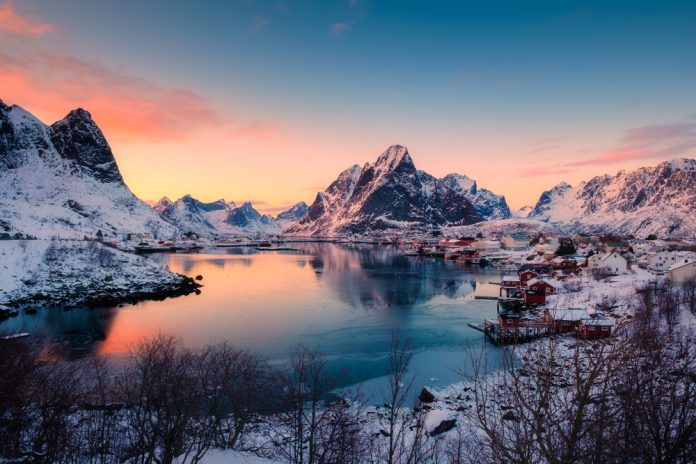There’s a certain stillness in winter that transforms everyday landscapes into scenes that feel almost magical. The quiet blanket of snow, the frost coating tree branches, and the low, soft light of short winter days all create a unique atmosphere. For photographers like us, this season provides an incredible opportunity to capture emotion, texture, and depth in ways that other times of year simply cannot.
Winter photography is about more than just pointing a camera at a snowy scene. It’s about interpreting the mood and translating the feeling of the cold, the isolation, or even the warmth of sunlight reflecting on frost. With the right techniques, you can evoke solitude, serenity, or drama in a single frame. The key is understanding how to use light, weather, and composition intentionally to enhance the mood of your images.
This article guides you through techniques for creating mood in winter photography, covering lighting, composition, weather conditions, and post-processing. Whether you are photographing quiet forests, frozen lakes, or snow-covered streets, the principles here will help you convey emotion and atmosphere in your shots.
Table of Contents
- Understanding Winter Light and Atmosphere
- Using Snow, Fog, and Frost to Enhance Mood in Winter Photography
- Compositional Techniques for Emotional Impact
- Choosing the Right Weather Conditions
- Post-Processing for Mood and Atmosphere in Winter Photography
- Practical Tips for Shooting in Cold Conditions
- Capturing the Appeal of Winter
- FAQ
Understanding Winter Light and Atmosphere

Photo by Aydin Hassan via Shutterstock
Winter light is unlike any other season. The sun sits low in the sky, creating long shadows and a soft, golden glow during sunrise and sunset. Even on overcast days, the light is diffused, which can produce soft, moody images that are ideal for creating atmosphere. Paying attention to how light falls on the landscape is critical for winter photography because it can either enhance or diminish the feeling you want to convey.
Shadows play an essential role in shaping the mood of your images. The long, angled shadows of trees on snow-covered ground can lead to a sense of depth and dimension. Conversely, flat, diffuse light from cloudy days can produce calm, quiet scenes. Learning to read the light and adjusting your exposure accordingly is vital. Snow is reflective, so it can trick your camera’s metering system, often requiring a slight exposure compensation to retain detail in the highlights.
Another aspect of winter light is color temperature. Cooler tones often evoke tranquility, solitude, and a crisp feeling, while warmer tones from sunrise or sunset can create a more intimate or inviting atmosphere. Understanding these nuances allows you to manipulate the mood effectively in your winter photography.
Using Snow, Fog, and Frost to Enhance Mood in Winter Photography

Photo by Jakob R.S via Shutterstock
Snow is one of the most powerful tools for creating mood in winter photography. Fresh snowfall can blanket landscapes in simplicity, providing clean compositions and highlighting textures in unexpected ways. Snow also reflects light, which can brighten shadows and illuminate details that would otherwise be lost. Positioning your subject against contrasting snow can create striking visual drama.
Fog and mist are excellent for adding depth and mystery. They obscure distant elements and isolate your main subject, making the viewer feel immersed in the scene. Shooting into fog can produce silhouettes and diffused light, perfect for capturing moody, ethereal images. Even a light layer of frost can add intricate details that enhance the visual interest and texture of your composition.
Combining these elements thoughtfully is where winter photography transforms from a simple snapshot to a scene that conveys emotion. Foreground frost, mid-ground snow-covered trees, and background fog can create layers that draw the viewer into the frame, offering a sense of place and feeling.
Compositional Techniques for Emotional Impact
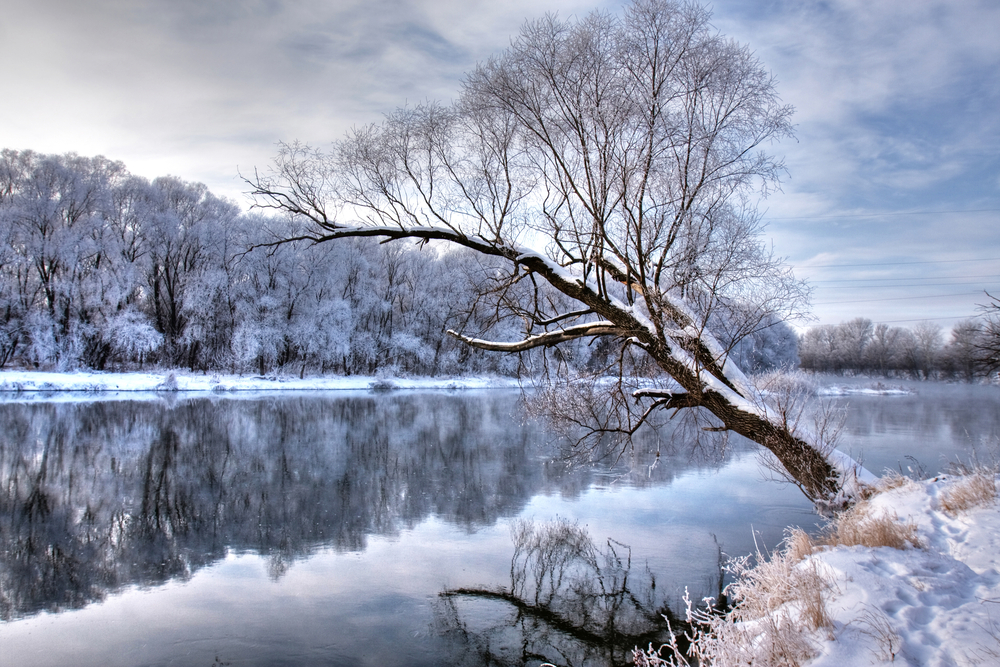
Photo by Burdov via Shutterstock
Composition is critical when it comes to creating mood in winter photography. Minimalism is a particularly effective approach. Large areas of untouched snow, sparse tree lines, or empty streets can evoke feelings of solitude and calm. Negative space in your composition can give the viewer room to breathe, enhancing the emotional impact of the scene.
Leading lines are another powerful compositional tool. Snow-covered paths, frozen streams, and fences naturally guide the viewer’s eye into the image, adding depth and a sense of journey. Shapes, patterns, and repetition, such as snow-laden branches or icicles, also create visual interest while reinforcing the mood of the scene.
Framing and layering can be used to create a three-dimensional feel. Trees, ice formations, and snowbanks in the foreground can help isolate the subject and add context. Paying attention to scale can evoke feelings of wonder or solitude, making your viewer feel small in a vast, snowy environment.
Choosing the Right Weather Conditions
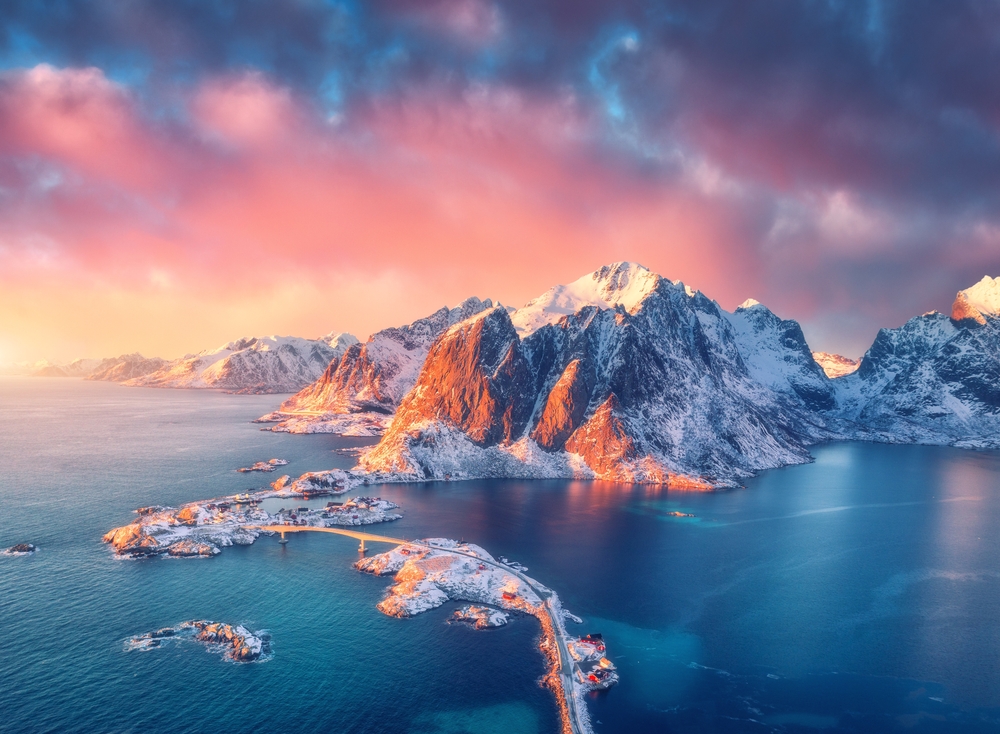
Photo by Denis Belitsky via Shutterstock
Weather plays a significant role in setting the mood of your winter photography. Fresh snow can provide clean, crisp scenes ideal for bright, dramatic compositions, while ongoing snowstorms can add energy and motion to your images. Snowflakes in the air can also create a sense of dynamism and impermanence.
Clear winter days offer high contrast, long shadows, and warm light during sunrise and sunset, perfect for capturing landscapes in a cinematic style. Overcast skies, on the other hand, produce soft, even light that works well for intimate or introspective scenes. Understanding how different weather conditions affect mood helps you plan your shoots for maximum emotional impact.
Checking forecasts and planning around the light and weather conditions allows you to anticipate moments that will elevate your winter photography. Timing can make all the difference in conveying the intended feeling.
Post-Processing for Mood and Atmosphere in Winter Photography
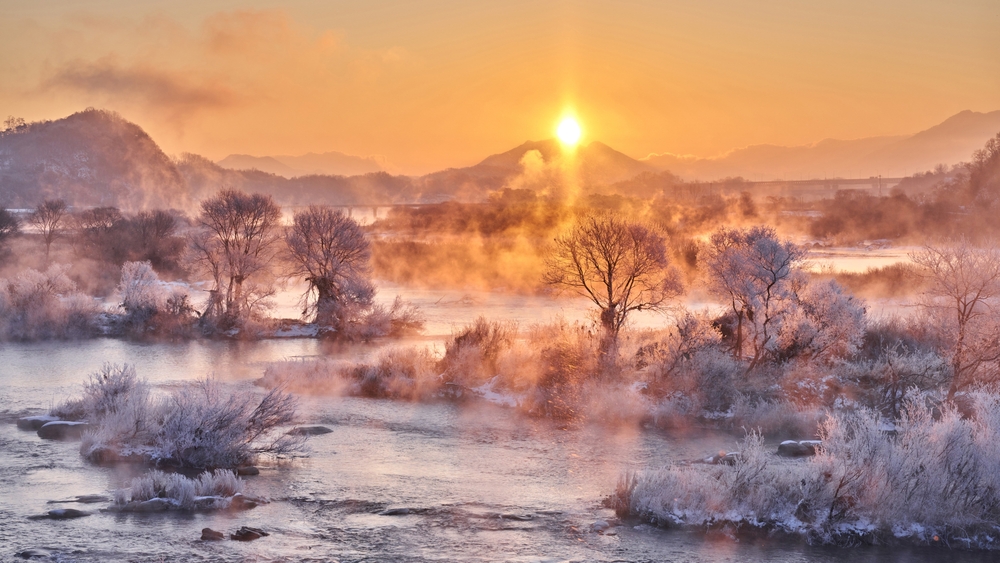
Photo by Stock for you via Shutterstock
Post-processing is an essential part of creating mood in winter photography. Adjusting the white balance can emphasize cool or warm tones, which dramatically changes the feeling of the image. Even small shifts can turn a bright, crisp photo into a serene or somber scene.
Selective adjustments, such as boosting contrast in snow or frost, can add depth and texture. Using subtle vignettes or gradient filters can guide the viewer’s eye and reinforce the mood. However, it’s important not to overdo it; preserving the natural lighting and ambiance is crucial for maintaining authenticity.
Clarity and sharpening adjustments can highlight intricate details like ice crystals or frosted branches. Meanwhile, reducing highlights in overly reflective snow ensures you don’t lose critical detail. A thoughtful editing workflow can enhance the emotional resonance of your winter photography.
Practical Tips for Shooting in Cold Conditions
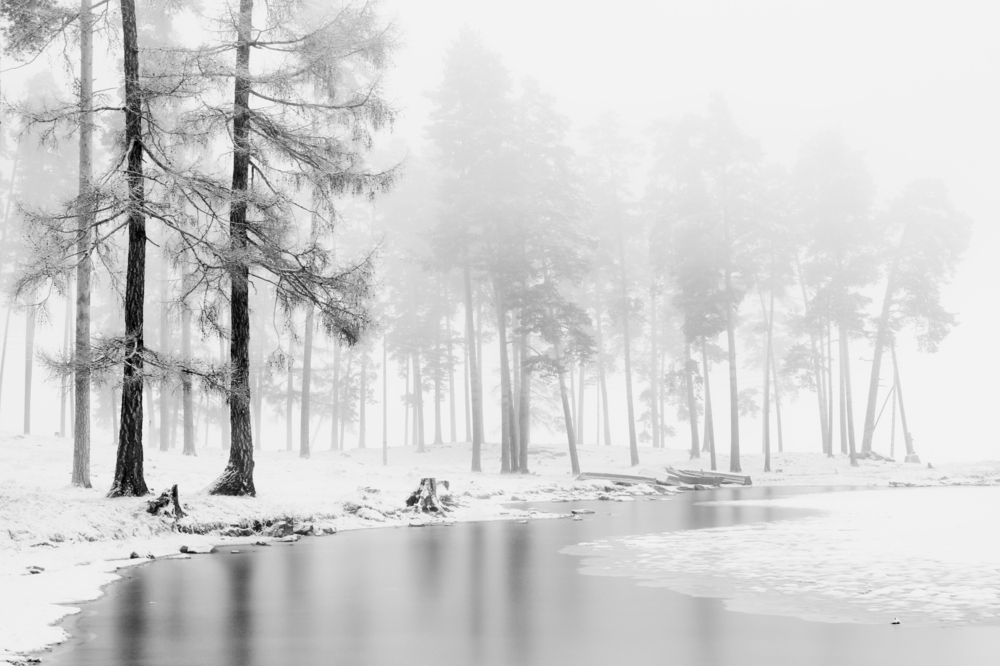
Photo by belkos via Shutterstock
Shooting in winter presents practical challenges that can affect both your photography and comfort. Cold weather drains batteries quickly, so carry spares and keep them close to your body. Gloves that allow dexterity for adjusting camera settings are essential, as is dressing in layers to maintain warmth.
Protect your gear from condensation when moving between cold outdoors and warm indoors by sealing your camera in a plastic bag for a few minutes. Tripods are helpful for long exposures in low light or capturing falling snow. Bracketing exposures can also help you retain detail in challenging lighting situations.
Planning shorter, intentional shooting sessions can help you manage fatigue and cold, keeping your focus on composition and creativity rather than just surviving the weather. Understanding these practical elements ensures you can spend more energy capturing the mood rather than fighting the environment.
Capturing the Appeal of Winter

Photo by muratart via Shutterstock
Creating mood in winter photography is about combining light, weather, composition, and thoughtful post-processing to convey emotion. The season offers an unparalleled palette of textures, colors, and atmospheres that can turn ordinary landscapes into evocative imagery.
Experimentation is key. Try shooting at different times of day, in varying weather, and from multiple perspectives to find the emotional impact you want. The quiet beauty of winter offers a chance to capture moments that feel intimate, vast, or mysterious, revealing aspects of the season that go unnoticed in everyday life.
Ultimately, the soul of winter photography is in its ability to evoke feeling. By mastering the elements of light, composition, and atmosphere, your images can resonate with viewers, leaving them with a sense of the stillness, beauty, and emotion unique to winter.
FAQ
What camera settings work best for winter photography?
Use a low ISO to minimize noise and adjust exposure compensation to prevent snow from appearing gray. A small aperture like f/8–f/11 helps retain sharpness and depth, and consider bracketing exposures to capture detail in highlights and shadows.
How can I prevent my camera from freezing or batteries from dying quickly?
Keep spare batteries in a warm pocket and rotate them as needed. Dress in layers, use gloves designed for photographers, and avoid exposing your camera to extreme cold for long periods.
What types of weather conditions are best for creating mood in winter photography?
Fresh snow, fog, and overcast skies all add atmosphere. Clear winter mornings and evenings offer warm light and long shadows. Each condition provides unique opportunities for evoking different moods.
Can I shoot winter photography with a smartphone?
Yes, but pay attention to exposure and white balance. Smartphones often struggle with reflective snow, so tap to adjust exposure and consider using a tripod for stability during low-light conditions.
How do I maintain natural-looking images during post-processing?
Make subtle adjustments to white balance, contrast, and clarity. Avoid over-sharpening or heavy filters. Aim to enhance the existing light and mood rather than creating artificial effects.
A quick heads-up: If you snag something through our affiliate links or check out our sponsored content, we might earn a commission at no extra cost to you. But fear not, we’re all about recommending stuff we’re truly stoked about!
Learn More:
- Golden Hour vs Blue Hour: When to Shoot What in Landscape Photography
- Best Cameras for Landscape Photography in 2025
Hero photo by Mumemories via Shutterstock

